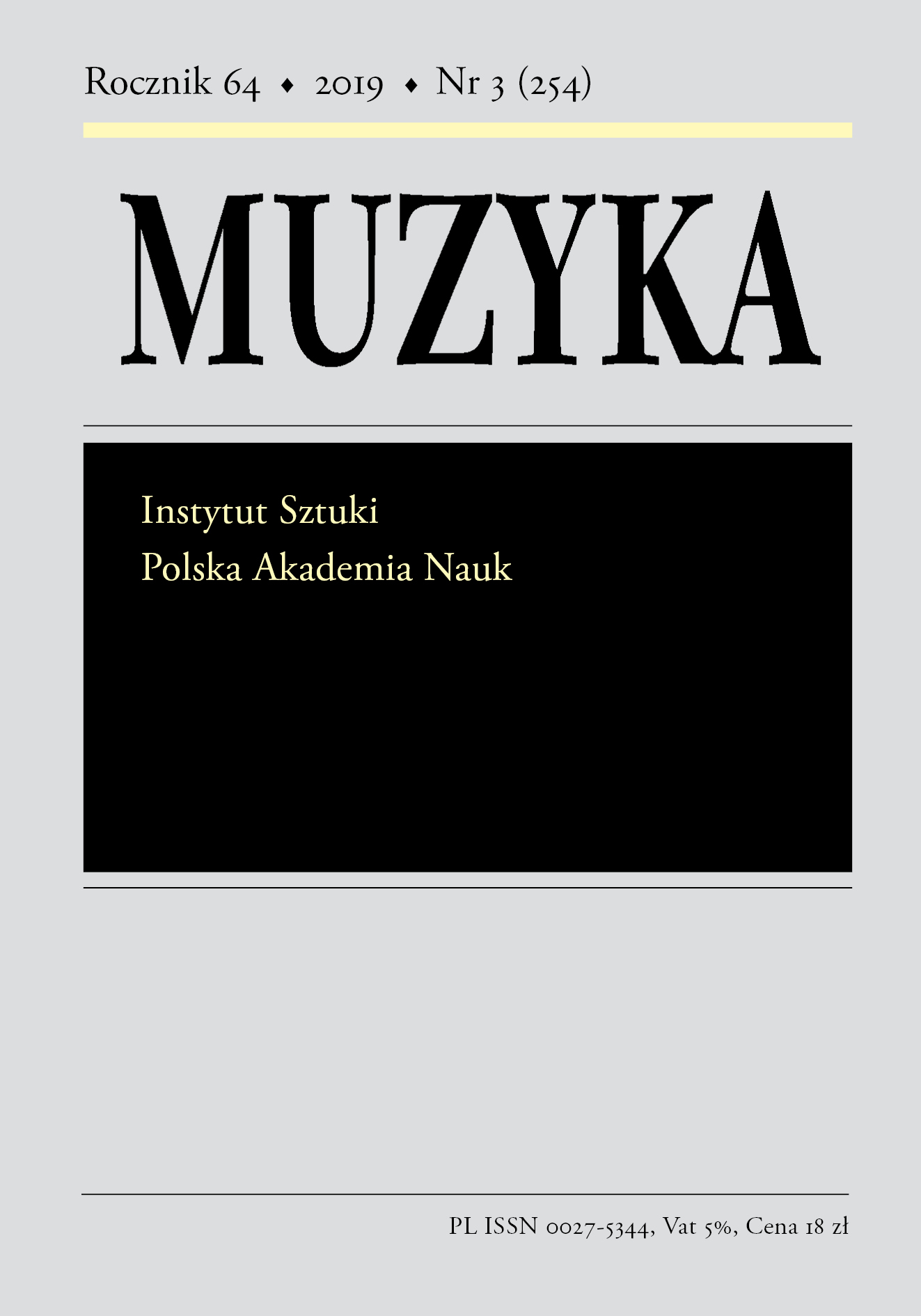Opera „Der Weisse Adler” Raoula Madera jako przykład transkrypcji muzyki Fryderyka Chopina uwikłanej w polską tematykę narodowowyzwoleńczą
Raoul Mader’s opera 'Der weisse Adler' as an example of transcriptions of Fryderyk Chopin’s works related to Polish national liberation themes
Author(s): Barbara LiterskaSubject(s): Music
Published by: Instytut Sztuki Polskiej Akademii Nauk
Keywords: Frederic Chopin in opera; musical transcriptions; Chopin’s reception, Tadeusz Kościuszko in opera
Summary/Abstract: The process of transcribing Fryderyk chopin’s music by other composers and performers (instrumentalists, singers) began still in the Polish master’s lifetime (in 1830). Among the enormous number of Chopin arrangements, however, we only fnd two operas: Giacomo Orefce’s Chopin (1901) and Raoul Mader’s Der weisse Adler (1917). The present paper is an attempt at a comprehensive characterisation of the latter piece of music. The author describes the available sources, the reasons for the opera’s composition, and its successive performances, as well as the libretto and the music. she focuses in particularon two aspects: 1) the Polish national liberation themes, which were highly topical at the timewhen the opera was written (1917, directly before poland regained independence), and 2) the various ways in which Chopin’s music was transcribed specifcally for the needs of an operatic spectacle.The former topic is discussed in the form of a detailed analysis of the libretto, as compared to historical facts. Based on this analysis, the author concludes that the opera emphasises the national liberation themes. It underlines Tadeusz Kościuszko’s achievements during the Kościuszko uprising of 1794, and places the national symbol – the white eagle – in the very title. Such themes are also present in the graphics found on the score cover and in the text of the opera’s leitmotiv hymn.The latter question – that of the ways in which Chopin’s music was arranged in the opera – is examined using Maciej Gołąb’s (2003) classifcation of chopin transcriptions. The author defines the types of transcriptions found in Mader’s piece on the basis of detailed comparison of the opera numbers with Chopin’s originals.In the conclusion of the paper, the author outlines the possibilities for further research, and emphasises that Mader’s opera is a document of chopin music reception in the artistic circles, and of the fgure of Tadeusz Kościuszko in early 20th-century Vienna.
Journal: Muzyka
- Issue Year: 64/2019
- Issue No: 3
- Page Range: 34-50
- Page Count: 17
- Language: Polish

